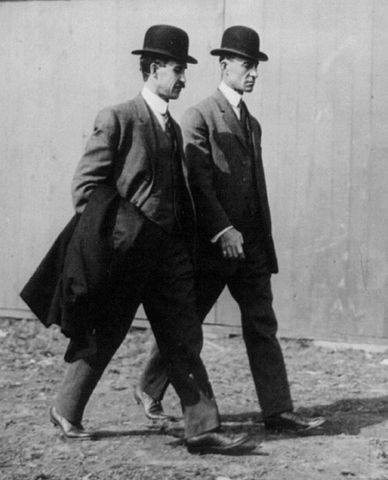This post was first published on 20th March, 2014.
Last week, my post was about the role of communication technology in making different regions of the world “excess able” from “access able”. It is important to bear in mind the role played by transportation systems in nullifying the effects of physical distance. Though different transportation means such as roadways, airways and waterways are available, when it comes to covering long distances in short time periods, aviation a.k.a. air transportation is one of the most convenient modes of transportation.
The Wright brothers began efforts to invent a motor powered aircraft in the year 1899. Research led them to the discovery of “Wing-warping”, which uses pulleys and cables to twist trailing edges of wings in opposite directions, thereby helping lateral control of a fixed-wing aircraft. The Wright brothers patented the Wing-warping method. Their shop mechanic, Charlie Taylor, who built an engine in just 6 weeks. After a few trial attempts, they finally succeeded in flying the first motor-powered flight on 17th December, 1903.
The first plane was invented by the Wright brothers, which recorded its first flight on 17th December, 1903. Subsequently, the Wright brothers were granted a patent for their invention titled “FLYING-MACHINE” on 22nd May, 1906. This patent broadly claimed a method of controlling a flying machine. Though the wing-warping technique was described, the specification was broad enough to cover any other technique that can be used for adjusting outer portions of wings of a machine to different angles to achieve lateral roll control. The concept of lateral roll control was basic to all aircraft designs and the Wright brothers used their patent rights to sue other competitors for financial and market advantage.
Glenn Curtiss, founder of the US aircraft industry and leading French aviator, Louis Paulhan, are some of the famous personalities who got sued by the Wright brothers. Activities of the Wright brothers adversely affected the US aviation, as any developments on any American-designed aircrafts were directly/indirectly opposed by the Wright brothers. This made the US depend on French machine as they were entering World War 1.
Although Curtiss and the Wright Brothers were rivals, they had effectively blocked the US from building new planes. Based on recommendation of Franklin D. Roosevelt, the US government pressured the aviation industry to form a cross-licensing pool, wherein each member was to pay a small blanket fee for using aviation patents for each plane manufactured, a major part of the money paid going to the Wright company and the Curtiss company, until their respective patents expired. The patent war eventually ended with death of Wilbur Wright in the year 1912, followed by Orville Wright retiring from business in the year 1915. The lawsuits, to an extent, damaged public images of the Wright brothers.
The rest is history. The modern flights boast of having the latest technologies to assist them. Further, flights are designed for various purposes such as civil aviation, military aviation, general aviation etc. Researchers continue their efforts to improve user experience and we hope to see more sophisticated aircrafts in future.
ImageSource/Attribution here (This image is in the public domain)



